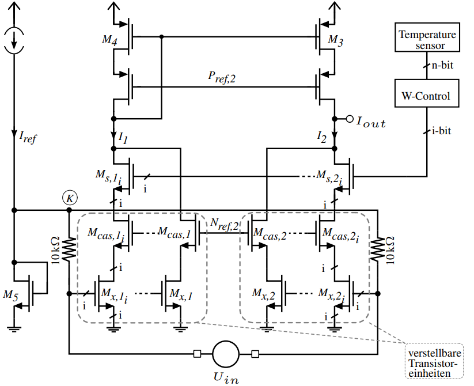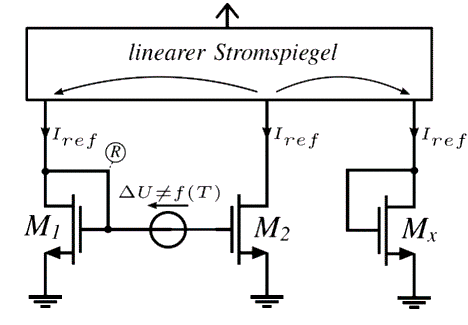Summary
- Profile Type
- Technology offer
- POD Reference
- TODE20230922011
- Term of Validity
- 22 September 2023 - 21 September 2025
- Company's Country
- Germany
- Type of partnership
- Investment agreement
- Research and development cooperation agreement
- Targeted Countries
- All countries
Contact the EEN partner nearest to you for more information.
Find my local partner
General information
- Short Summary
- An invention of a German university solves the problem of parametric sensitivities of semiconductors. The new technology is a universal method that can be used in volume production for all known analog MOS (metal–oxide–semiconductor) circuit arrangements. The university offers a license agreement and/or a technology cooperation agreement.
- Full Description
-
Semiconductor components such as diodes or transistors have various parametric sensitivities: If, for example, the operating temperatures of components fluctuate, they change their parameters. Temperature changes thus have a direct effect on the current-voltage behavior of semiconductors - which can have a negative impact on analog circuits in particular, such as sensor readout circuits, and then lead to erroneous readings.
An invention of a German university solves the problem of parametric sensitivities in general:
It compensates e.g. all temperature influences in analog MOS (metal–oxide–semiconductor) transistor circuits. The approach consists of two parts: A novel current source concept imprints all DC operating points of the effective gate voltages in the entire possible design range of strong channel inversions in a temperature-independent and simultaneously highly precise manner (Fig. 1). In particular, the analog circuit class of 'Square Law Circuits', which is based on the quadratic transfer characteristics of MOS transistors, can now for the first time process all low-frequency signals correspondingly independent of temperature (Fig. 2). These, as well as all other analog circuit concepts in strong channel inversion can be extended on the basis of the second part of the approach by a supplementary method, which can then be used to compensate for further, still existing temperature dependencies in the circuit behavior. All effective gate voltages are then still in a fixed relationship to a voltage standard, e.g. from a bandgap circuit, and are thus always defined with high precision. To compensate for the remaining temperature dependencies, for which the small-signal forward slopes are primarily responsible, adjustable transistor units are used which are configured centrally via a common digital control word as a function of the current operating temperature.
The new technology is a universal method that can be used in volume production for all known analog MOS circuit arrangements. Over the entire operating temperature range from -40°C to +140°C, which is typically of industrial interest, all key parameters such as current consumption, dynamic ranges, gains, equivalent 1/f input noise and also frequency responses can optionally be kept almost perfectly constant. In extreme cases, the method can also be robustly applied in the lower cryogenic temperature range (down to close to 0°K), but also well above +140°C (high temperature range).
The University offers a licensing agreement to companies operating in the fields of electrical engineering and semiconductors. If there is interest in further development of the process, the university also offers technological cooperation. - Advantages and Innovations
-
- Suitable for CMOS and SOI transistor circuits
- Simple setting of all operating points
- Operating range from
- -40°C to +140°C
- High accuracy and robustness - Stage of Development
- Lab tested
- Sustainable Development Goals
- Goal 9: Industry, Innovation and Infrastructure
- IPR status
- IPR applied but not yet granted
- IPR notes
- A registration at the German Patent and Trademark Office has been made, further international follow-up registrations are possible in the priority year.
Partner Sought
- Expected Role of a Partner
- The University offers a licensing agreement to companies operating in the fields of electrical engineering and semiconductors. If there is interest in further development of the process, the university also offers technological cooperation.
- Type and Size of Partner
- SME 11-49
- Big company
- SME <=10
- Other
- SME 50 - 249
- Type of partnership
- Investment agreement
- Research and development cooperation agreement
Dissemination
- Technology keywords
- 001001004 - Electronic engineering
- 001001015 - Semiconductors
- Market keywords
- 03001001 - Semiconductors
- 03001004 - Other semiconductors
- Targeted countries
- All countries

